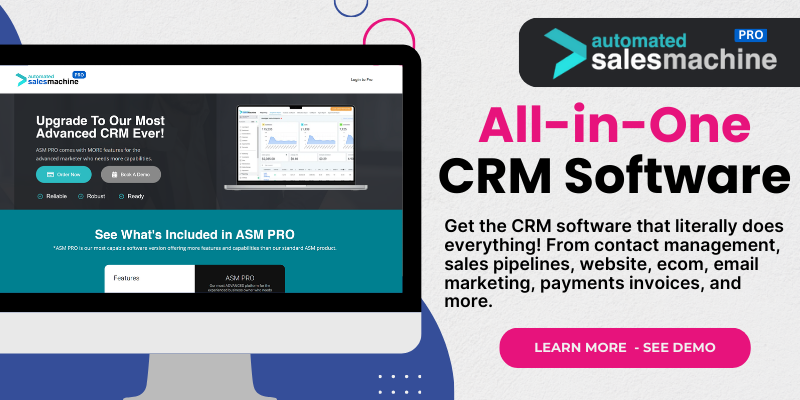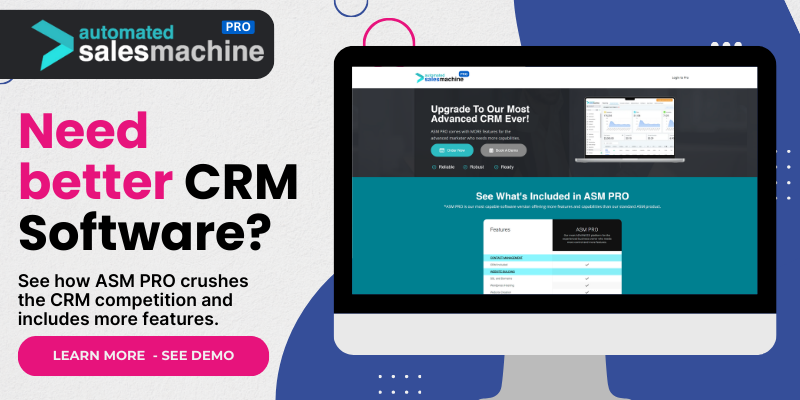Understanding ATS and CRM: Why They Matter
The Basics of ATS
From my early days in recruitment, I learned that an Applicant Tracking System (ATS) is like your best buddy when it comes to handling job applications. It’s designed to help you sort through resumes, filter applicants, and manage the entire hiring process efficiently. Imagine having a tool that takes tedious tasks off your hands—yeah, that’s what the ATS does!
What’s super cool about ATS is its ability to integrate with job boards and social media platforms. That means when you post a job, it automatically shares it across various channels. As a marketer, I can tell you that this exposure is golden, increasing your chances of finding the right candidate.
Ultimately, an ATS helps streamline recruitment processes. You can focus more on interviewing and less on being buried in countless resumes, which everyone can agree is a win!
The Role of CRM
On the flip side, CRM stands for Customer Relationship Management. Think of it like having an all-access pass to your customer data and interactions. Over the years, I’ve seen businesses of all sizes thrive thanks to effective CRM systems. They collect and analyze customer information to strengthen relationships, anticipate needs, and provide stellar support.
One of the biggest advantages of CRM is how it lets you track every interaction with a customer. Whether it’s emails, calls, or meetings, all the data is stored neatly in one place. This means your team can be on the same page, which is key for delivering great service.
Plus, modern CRMs often come with automation features that can save you a load of time. Automated responses to customer inquiries? Yes, please! In my experience, the right CRM can be a gamechanger for sustaining customer loyalty.
Combining ATS and CRM
The real magic happens when you combine both ATS and CRM functionalities. As businesses continue to grow, the importance of managing both talent and customer relationships becomes even clearer. I’ve often joked about needing a “one-stop shop” for both realms, and that’s exactly what some software providers are starting to offer.
With a combined system, you can streamline your hiring process while simultaneously managing client relationships. This layered approach not only saves time but also enhances communication across departments. Everyone from sales to HR can benefit from shared insights.
So, whether you’re hiring or supporting your customers, having both tools working in sync is a surefire way to boost overall performance. Trust me, when all parts of your business operate smoothly, it shows!
Identifying Top Features in ATS/CRM Software
User-Friendly Interface
First things first, if the software isn’t user-friendly, it’s going to be a tough sell—trust me! I remember when I first started using ATS software, and if it weren’t for a clean design, I’d have lost my mind! An intuitive interface means less time figuring out how to use it and more time actually leveraging it.
A great user interface allows even the less tech-savvy of us to navigate through complex systems. Features that are easy to find can enhance team adoption rates. If everyone loves it, they’ll actually use it, and that adds value right away.
When I look at software recommendations, I prioritize systems with a clean, organized layout. Life is already complicated enough without wrestling with clunky software!
Integration Capabilities
Let’s face it: not all software plays well together. I’ve worked with various tools that, despite having individual strengths, were like oil and water when it came to integration. You’ll want to choose an ATS/CRM that can seamlessly integrate with other platforms you’re already using—like payroll systems, email marketing, and even social media.
Integrations can save you a ton of headaches in the long run. When your ATS/CRM can connect with other systems, you’ll find data flows more freely, saving developers and teams time that can be spent focusing on what really matters.
In my experience, seamless integration leads to enhanced productivity. You’re able to create a more cohesive workflow, and that’s what we all need.
Mobile Accessibility
In today’s fast-paced world, we’re constantly on the go. Therefore, having mobile access to your ATS/CRM software is crucial. I can’t count how many times I’ve needed to check candidate statuses or customer inquiries while waiting for my coffee at a café!
Being able to access critical information from your phone or tablet means you can stay engaged with your work no matter where you are. Whether you’re traveling or working from home, that flexibility allows you to be more responsive and effective.
So, always check if the ATS/CRM offers a mobile-friendly interface. It’s a simple feature, but it can make a world of difference in your day-to-day operations.
Pricing Structure: Getting the Best Bang for Your Buck
Understanding Pricing Models
When it comes to software, the pricing model can make or break your decision. Some options charge per user, while others may offer tiered pricing based on the features you want. Personally, I always prefer the straightforward options. I like to know exactly what I’m paying for and what I can expect in return.
Additionally, some vendors offer free trials. Trust me, take advantage of those! It’s a great way to gauge whether the software fits your needs without making a financial commitment right away.
Evaluating the pricing model is crucial—make sure it aligns with your organization’s budget and long-term goals. You don’t want to invest in a system that won’t yield a great return on investment.
Long-Term Costs
While looking at upfront costs is essential, don’t overlook long-term pricing. Some software may appear budget-friendly initially but can have additional costs down the line—such as maintenance fees or costs for add-on services.
I’ve seen clients get tripped up by hidden fees that really stretched their budgets thinner than they intended. So, be sure to clarify everything before signing on the dotted line.
In my experience, understanding not just the upfront costs but also the potential long-term expenses is key to making an informed decision. Always ask the provider about any unexpected costs after deployment.
Return on Investment
Last but definitely not least, when considering pricing, think about how the system will impact your bottom line. An effective ATS or CRM can lead to increased productivity, improved customer satisfaction, and ultimately, higher revenue.
When assessing value, remember that the best software isn’t just the cheapest—it’s the one that delivers the most strategic advantages. If the system helps boost your hiring or customer service processes, that’s a solid investment!
Always keep an eye on potential ROI. I continually evaluate this metric to ensure I’m making smart choices with my software investments.
Exploring Popular ATS/CRM Software Options
Salesforce
Ah, Salesforce. It’s like the Swiss Army knife of CRM systems. Trust me, it’s powerful and customizable, which is a huge plus. However, be prepared for a learning curve. But once you’re up to speed, you can tailor it to fit almost any business need.
One of the standout features is its automation capabilities. You can set rules to streamline repetitive tasks. It’s like having a personal assistant, making your life easier! Plus, its reporting tools provide fantastic insights on sales performance, which helps in refining strategies.
It’s widely praised for its customer support, too! I’ve seen many businesses transition smoothly because the support staff is so knowledgeable.
Greenhouse
Then there’s Greenhouse, an ATS that’s particularly helpful for mid-sized to large companies. What I love about it is the focus on structured hiring—a process that encourages inclusivity and fairness which is essential in today’s job market.
They offer plenty of integrations, so you can connect it with your favorite HR tools, making it easy to keep everything centralized. Plus, the candidate experience is excellent, with plenty of options for communication and updates.
If you’re looking for a user-friendly interface that feels modern and fresh, Greenhouse definitely checks all the boxes.
HubSpot CRM
Last but not least, HubSpot CRM is fantastic, especially if you’re just starting out or looking for something budget-friendly. It’s free to start, which—even for those of us who like to keep costs down—is super appealing!
One of its standout features is its robust marketing tools, which allow you to nurture leads effortlessly. Plus, it’s designed to scale, so as your business grows, you won’t need to reinvent the wheel with a new system.
HubSpot also offers incredible training materials, which can help your team get on board quickly. I’ve seen plenty of teams transition smoothly because of all these readily available resources.
Wrapping Things Up: Finding the Best ATS/CRM for You
Assessing Your Unique Business Needs
Ultimately, the best ATS/CRM software is the one that fits perfectly with your business model. Assess your needs thoroughly—what’s most critical for hiring or managing customer relationships? This will guide your search and ensure you find the right match.
Gather input from your team, too; they’re the ones using the software daily! An open dialogue can reveal insights on what’s necessary versus what’s merely nice to have.
If you’re on the fence, remember: software should be a tool that simplifies your life, not complicates it!
Trial and Error
Don’t be afraid to try a few options! Most software solutions offer free trials, which I find super useful. This lets you determine not just if it’s technically good, but if it feels right for your team too. You can get a real sense of its usability and features in practice.
In my experience, it sometimes takes a couple of attempts to find the perfect software fit. Be patient and persistent—you’ll find what works for you!
Also, gather feedback from your team during these trials. They’ll have valuable opinions on usability that can’t be overlooked!
Moving Forward with Confidence
Once you’ve decided, I suggest rolling out the software in phases. A slow roll-out allows your team to adjust without feeling overwhelmed. Provide training and resources to help everyone cultivate their skills in using the system.
Change can be tough, but with the right approach, you can make it enjoyable. Celebrate small wins and encourage your team to embrace the new system—this will make the transition smoother for everyone.
So, go out there, explore your options, and know that the right ATS/CRM software is out there just waiting to help you succeed!
FAQs
1. What is an ATS tool used for?
An ATS, or Applicant Tracking System, is used primarily for managing recruitment processes. It helps organizations sort through job applications more efficiently, schedule interviews, and manage candidate communications.
2. How can a CRM benefit my business?
A CRM, or Customer Relationship Management software, helps businesses track interactions with customers. This boosts customer service quality, fosters stronger relationships, and can lead to increased sales through better understanding of customer needs.
3. Are there free options for ATS/CRM software?
Yes! Some ATS and CRM solutions like HubSpot offer free versions that allow businesses to start managing their hiring or customer relationships without any upfront costs, making them great for startups.
4. Can ATS and CRM systems be integrated?
Absolutely! Many modern ATS and CRM systems provide integrations with other tools and applications, allowing you to streamline workflows and maintain a seamless flow of data between platforms.
5. How do I choose the best ATS/CRM for my business?
To choose the best ATS/CRM, assess your unique business needs, consider user-friendliness, explore pricing models, and look for integration capabilities. Don’t hesitate to take advantage of free trials to ensure it fits well with your operations!

